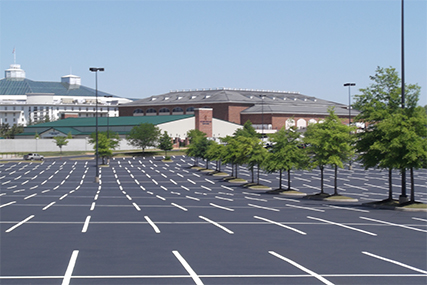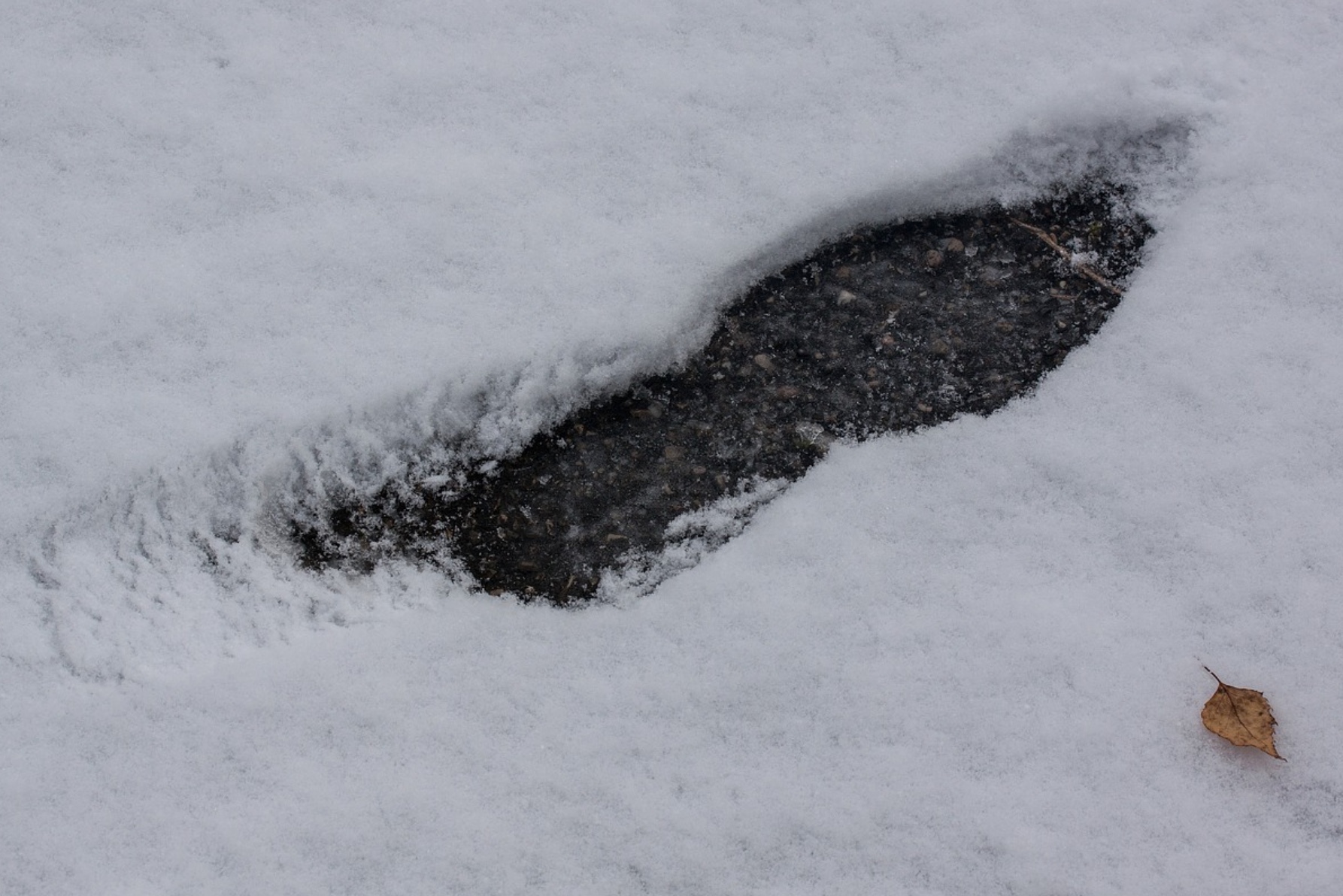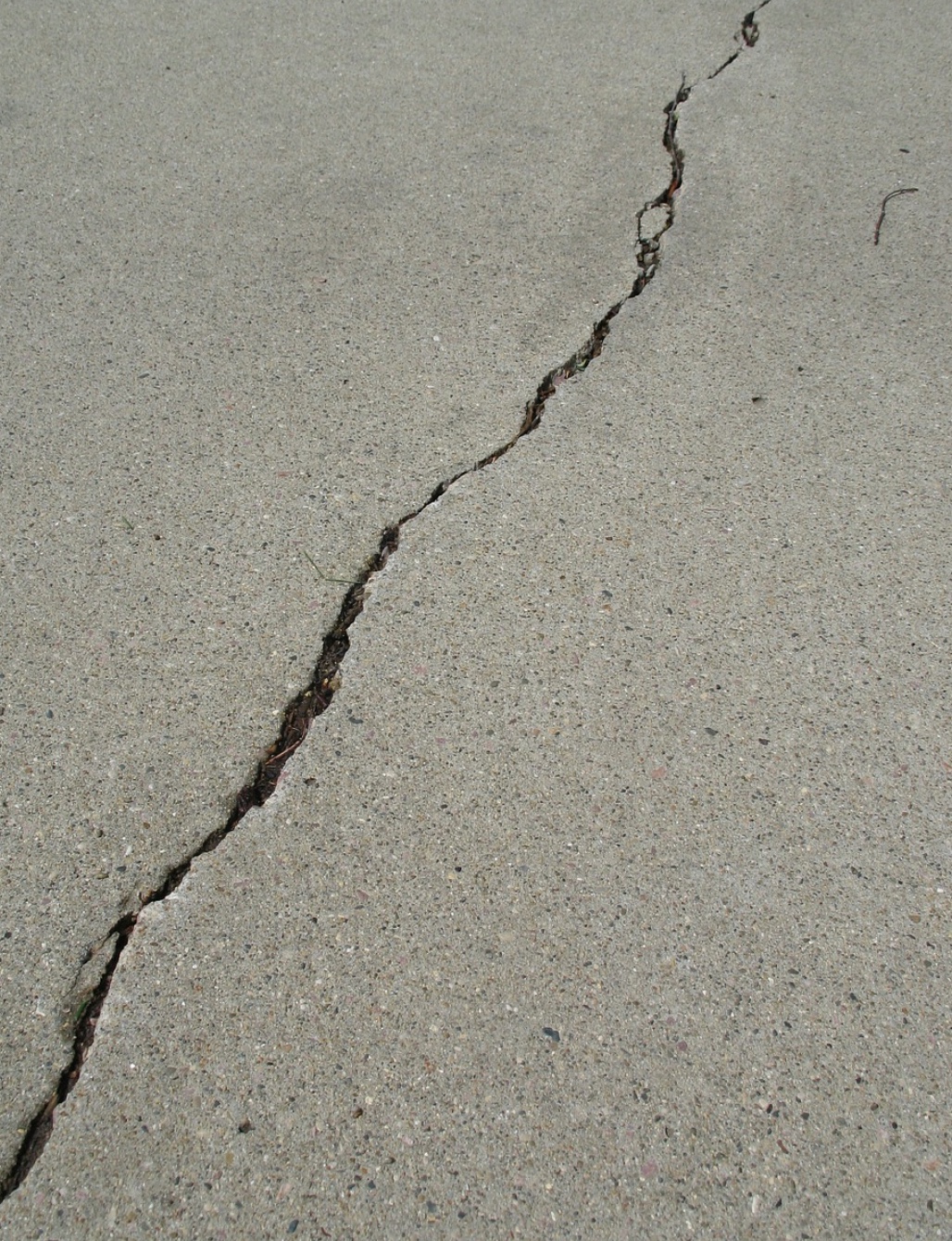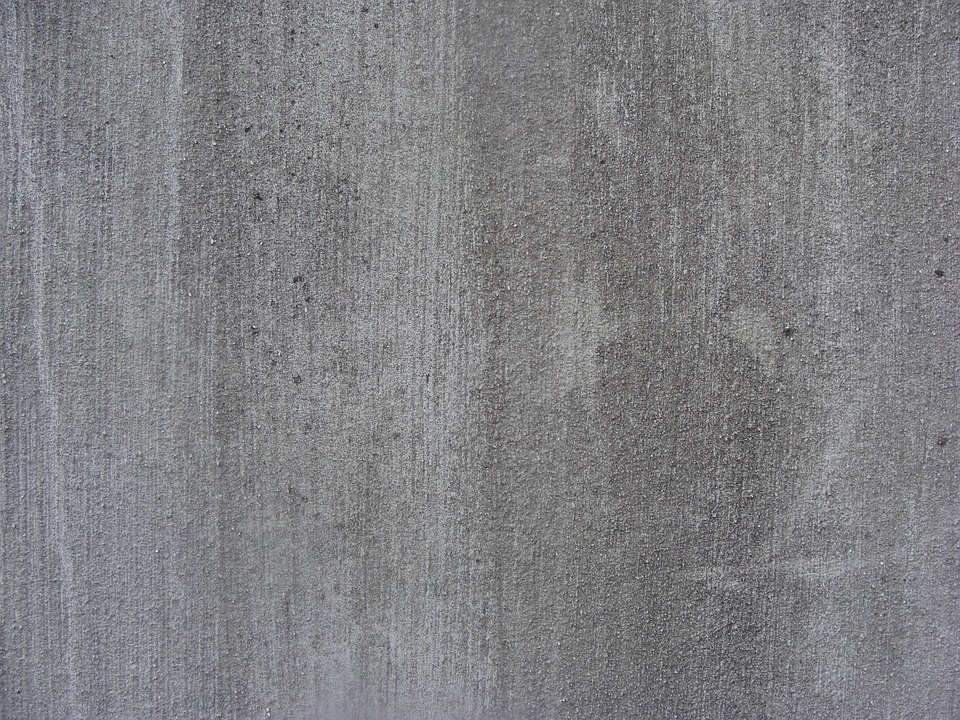
Best Practices For Parking Lot Paving and Maintenance
For business owners, the condition of your parking lot says a lot about your business. Nice, smooth pavement that’s properly maintained sets the tone for care and professionalism while a parking lot that’s filled with broken glass and cracked pavement tells a whole different story. A parking lot is the front face of your business–it’s one of the first things that your customers see when they arrive. Therefore, by keeping it in excellent shape, your business can maintain a proper professional exterior.
Keeping Your Parking Lot Pavement in Peak Condition
Even the most durable asphalt pavement systems can’t escape the weathering of Mother Nature, which is why consistent maintenance is key to keeping your parking lot in peak condition. To achieve a well-maintained parking lot, there are a few methods property owners can use to ensure pinnacle results. Let’s take a closer look at a few examples:
Preventing potholes and cracks: Preventative measures should always be implemented to ensure that your parking lot won’t succumb to cracking and potholes. With ample cracking and holes in your parking lot pavement, water can collect, freeze, and expand which will lead to further damage during winter seasons. Crackfilling is a great method for cleaning out pavement cracks and preventing future cracks from forming. Crackfilling will reduce the ability for water to seep in and weaken the pavement with moisture. Typically, you can use asphalt emulsions, asphalt cements, fiberized asphalt, or polymer-modified emulsions for crackfilling.
Sealing cracks: Sealing cracks is another excellent method that will help to keep your parking lot pavement in great condition. When using the cracksealing method, you have to grind out the crack a little wider–by at least half an inch–so you can create a reservoir for the crackseal material. The sealant material provides excellent flexibility during various thermal changes, including frigid temperatures. For cracksealing, you can use asphalt rubber or rubberized asphalt. For long-term performance, cracksealing is the way to go.
Surface treatments: Surface treatments are a great way to keep your pavement strong and intact. Depending on your preferences, there are many surface treatments you can choose from. Some options include coatings, penetrating or rejuvenation sealers, and aggregate-based seals. These treatments can help you save money over time since they will protect your pavement from developing cracks in the future.
By utilizing these methods, you will be able to keep your parking lot pavement in excellent shape. With a smooth, crack-free parking lot, the exterior of your property will be welcoming to all.

Concrete, Cement, and Asphalt: What’s the Difference?
From residential and commercial driveways, building columns, foundations, walls, decks, sidewalks, roadways and more, concrete, cement, and asphalt serve many purposes. Due to its durability and unyielding strength, concrete tends to have a longer lifespan than most building products and materials. Not to mention, with its thermal properties, homes, and buildings that are built with concrete walls tend to be more energy efficient. Even though concrete is widely known and commonly used, there tends to be a discrepancy between it and another material: cement. It’s a common occurrence for people to interchangeably use the words concrete and cement. Despite popular opinion, cement is actually a component of concrete. On the other hand, asphalt—while used in construction—is a completely different material than cement and concrete. Let’s take a look at the differences between these three popular construction materials.
Defining Concrete and Cement
Despite what people often assume, cement is actually an ingredient that helps to form concrete; not a synonym for it. In all, concrete is created through a combination of aggregates and paste materials. The aggregates are normally composed of sand, gravel, and crushed stone, while the paste is formed through the fusion of water and portland cement. As you can see, the cement plays a small role in the creation of concrete–typically having a 10-15% composition level. On its own, cement isn’t even half as durable as concrete and after a short period of time, it would start to crack and fissure. The incredible thing about concrete is that it can last for hundreds of years, however, cement has nowhere near that same lifespan. The reason that concrete tends to last for a very long time has to do with the hydration process it goes through when its first being mixed. During this process, both the cement and water components begin to bind together and harden into a solid, heavy-duty mass. However, this process doesn’t stop once the concrete becomes a solid. The hardening process continues for years and years–the main reason why concrete has such a long lifespan is because, as it gets older, it will continuously grow stronger.
Cement, on the other hand, is usually a fine powder that is made from materials such as limestone, calcium, iron, silicon, aluminum, as well as a few other minerals. Normally, cement will be placed in a kiln that is heated to a fiery temperature of 2,700 degrees Fahrenheit. Once it is heated, the cement it will take on a marble-like appearance. From there, it will ground up very, very finely where gypsum will later be added. After that is completed, it will be ready to be added to the mixture that will form cement. Once the cement is mixed with water, it becomes one of the binding agents that form its counterpart–concrete. Although cement only comprises 10-15% of concrete, that ratio between the two is very important.
What is Asphalt
Unlike cement and concrete, asphalt is a petroleum-based organic material that’s commonly used in laying roads, and parking lots. The two basic ingredients in asphalt are aggregates—crushed stone, gravel, sand—and petroleum (also referred to as bitumen). Additionally, asphalt contains levels of carbon, hydrogen, sulfur, nitrogen, nickel, iron, and vanadium. Since asphalt is gravel-based like concrete, it can also be used for driveways. While it’s cheaper than concrete, there are plenty of maintenance needs that accompany asphalt.
Although cement, concrete, and asphalt are separate components, they all play an extremely important role in the building and construction of numerous facilities and roadway functions.
Cement, Concrete and Asphalt Nashville, TN
For cement, concrete and asphalt in Nashville, TN contact Lone Star Paving. Lone Star offers turnkey new installs as well as overlays, or resurfacing, of existing asphalt surfaces, asphalt repairs and a full line of concrete services – from concrete repair to new installs of concrete slabs, sidewalks, and curbs. We provide seal coating, striping, signs and more. Call today!

Preparing Asphalt for the Winter Season
Once the fall weather starts to fade and the weather grows colder, it’s a sure indicator that winter is upon us. During this time, we usually prepare our cars, our home’s interior and exterior, landscaping and more for the onslaught of cold weather and snow. However, it’s also essential that we take the time to prepare our driveways and residential streets, as well. Whether you own an asphalt driveway or work in roadways services, here are a few things you can do to prepare driveways and roads for the winter season:
Clean up debris: Make sure roads and driveways are clear of any fallen, branches, leaves, acorns, and dirt. Roads and driveways that are clear of debris will be safer to drive on in during inclement weather, as it will be much easier for shovels and plows to clear snow off of them. For driveways, it’s easiest to use a broom or leaf blower to clean up debris. However, asphalt parking lots and roads will need professional cleaning services due to their expansive nature.
Invest in asphalt maintenance essentials: During the frigid winter, it’s essential to have the right tools on hand to ensure that you can get in and out of your driveways and safely navigate roads. You should always have a strong shovel or two, pavement salt, and for roads, cold mix for pothole repairs.
Keep an eye out for standing water: Pay close attention to any areas that tend to hold a lot of standing water. Once the winter passes, you should invest in repairments for those specific areas. However, standing water can cause issues during the winter, for when the temperature drops, that water will freeze and become a hazard.
Check and seal cracks: Before the winter snowfall, check pavement for any cracks and fissures. Any that you find would be properly sealed and protected. Left unprotected, snow and ice will expand those cracks, and you’ll have bigger and more expensive problems on your hands.
By utilizing this handy tips, roads and driveways are sure to remain safe and protected during the cold winter season. Most importantly, these preparations will also ensure that the asphalt will stay intact and in good shape come time for spring.

The Differences Between Blacktop and Asphalt
Asphalt & Blacktop in Nashville, TN
While many people tend to use the words ‘asphalt’ and ‘blacktop’ synonymously, these two terms are actually quite different. When it comes to construction materials, asphalt and blacktop are names that are used to distinguish the substances used for paving roads, driveways, etc. If you are in need of asphalt or blacktop in Nashville, TN, contact Lone Star Paving, today. For now, let’s take a closer look at the differences between asphalt and blacktop which we have defined below for you.
What is Asphalt?
Asphalt, also known as asphalt concrete, is a composite material that’s made from mineral aggregate–usually a combination of sand and rocks–and bitumen. The aggregate and bitumen bind together to form a black and highly viscous mixture.
Once combined, the asphalt mixture is compacted together with a steamroller to form a smooth, surface. Asphalt boasts water-resistant and durable qualities that contribute to its long-lasting surfaces. However, due to exposure and other environmental factors, asphalt is prone to cracking, potholes, stripping, etc., requiring maintenance and upkeep. While asphalt is typically used to pave roads, it is also commonly applied to commercial and industrial properties such as racetracks, embankment dams, and parking lots.
What is Blacktop?
Like asphalt, blacktop is a form of bitumen and composite material. However, while asphalt is created by combining the two mixtures and melting over high heat, blacktop is formed with more preciseness. To make blacktop, 95% composite material–stones–and 5% liquid asphalt are combined together and placed over 300-degree heat. From there, the compounds are mixed together to form blacktop. Since it’s less durable than asphalt, blacktop is applied to playgrounds and residential driveways and streets.
As you can see, asphalt and blacktop have many similarities in their uses and composition. However, what sets these two materials apart is their core composition, quality, and durability. Asphalt is typically used for commercial and industrial pavings due to its strength and durability while blacktop is used for smaller areas that experience less wear and tear.

The Process of Asphalt Pavement Installation
Asphalt Paving & Repair
Though it’s built for durability, overtime, asphalt can experience some degrees of wear and tear. When this occurs, it’s ideal for the asphalt to be repaired. However, if the asphalt surface is in bad shape, it may need to be removed altogether. Lone Star Paving provides quality asphalt paving in Nashville, TN, and the middle Tennessee area. We provide turnkey new installs as well as overlays, or resurfacing, of existing asphalt surfaces. With that being said, let’s take a look at the 6 steps that go into the installation of asphalt/pavement.
Removal of existing surface
The first step in the installation of asphalt/pavement is the removal of the existing surface. Many times, these surfaces consist of older forms of concrete, asphalt, or pavers. Usually, a reputable paving team will come in and begin the demolition process to remove all of the existing surface, providing a clean canvas for the new asphalt. This will require heavy machineries such as bobcats, front loaders, dump trucks, and forklifts.
Grading and Sloping
Once the demolition process has commenced and all the existing surface has been completely removed, the pavers can begin the grading and sloping process. The grading and sloping step help to create a surface that boasts excellent water drainage in the event of high rains. Depending on the company you hire, pavers will normally use laser-guided transits and automatic motor graders for optimal results. Since water is the number one source of damage to asphalt–causing potholes, heaving, and cracks–it’s extremely important to execute the grading and sloping step with precision and carefulness.
Preparing the Sub Base
As soon as the pavers have created a surface that yields excellent water drainage, it’s time to start preparations for the sub base. In asphalt roadways, driveways, etc., the sub base gives support to the new pavement. Additionally, the sub base provides the means of a frost barrier come time for the winter season. This frost barrier helps to reduce the likelihood of any sustained damage during winter temperatures. During this process, workers have to carefully measure the thickness of the sub base, as well as its stability and compaction. If these measurements don’t line up, it can cause the asphalt surface to not be as durable as it should in years to come.
Sub Base Repair
As the sub base is compacted to proper standard, the pavers will execute what’s called a proof roll. A proof roll is done to secure the underlying surface and make sure that it’s strong enough to support the top layer of asphalt. In the event the pavers find an unsturdy spot during the proof roll, they will take the necessary steps to repair the sub base.
Binder and Surfacing
Once the sub base has been properly repaired of any soft points, pavers can begin the binding and surfacing stage. Usually, the binding agent is made of aggregate that’s mixed together with oil; this makes the binder industrial-strength and sturdy.
Installing the Asphalt
After the first 5 steps are completed with precision, the pavers can start installing the top layer of asphalt. In the event that old asphalt meets with new asphalt ends, butt joints need to be installed to ensure a smooth transition between the two surfaces. Once this is completed, the entire surface must be smoothed and compacted for efficiency.
Once these steps have been completed, the new asphalt will boast smooth driving and years of durability. For more information on paving and asphalt in Nashville, TN, contact Lone Star Paving, today.

Why Signs and Road Markings Play an Important Role in Transportation
Pavement Markings and Signs Nashville, TN
The importance of traffic signs and pavement markings on roads are greatly underestimated by many while their presence is taken for granted by drivers of all ages. Think of all the snap decisions you make while driving; which way should I turn? What exit should I take? Is this a right-turn-only lane? Without signs and road markings, would you still be able to make your driving decisions confidently? Traffic signage plays a very significant role in transportation, for it acts as a form of communication for drivers, pedestrians, and bicyclists. For pavement markings and signs in Nashville, TN and the middle Tennessee area, contact Lone Star Paving, today. Lone Star provides expert striping and signs using only premium traffic paints. Need concrete? We also offer concrete repair and new installs of concrete slabs, sidewalks, and curbs.
Signs and Safety
Without signs and road markings, the safety of transportation would quickly diminish and chaos would ensue. Unmarked pavement can cause moments of uncertainty in determining the proper route to take. Not to mention, trying to figure out the correct traffic pattern, lane space, right-of-ways, etc., proves to be very distracting for drivers and can even be hazardous. Having proper pavement markings and traffic signs is essential, for it directs traffic, enforces speed regulations, establishes parking regulations, marks areas of pedestrian crossings, provides lane boundaries, guides turning points, and so much more. Most importantly, these markings and signs are there to minimize accidents, maintain safety, and optimize the driving experience. While we can’t control the safety measures taken by the drivers we share the road with, motorists can take comfort in knowing that there are sufficient means of signage and markings to help navigate us through detours, road hazards, vast parking lots and unfamiliar areas.
Common Roadway Signs
Featured below are a few examples of roadway signs that are implemented in order to keep drivers safe and alert.
Regulatory Signs
Regulatory highway and street signs typically consist of yield signs, stop signs, turn regulation signs, parking signs, traffic signal signs, railroad crossing signs, road closed signs, etc.
Warning Signs
Common warning signs include turn warnings, curve warnings, intersection signs, merge signs, narrow lanes/road signs, low clearance signs, pedestrian crossings, speed advisory signs, speed bump warnings, construction work, etc.
Marker Signs
Roadway marker signs include route markers, detour signs, junction signs, etc.
With efficient signage and roadway markings, drivers are more likely to follow traffic laws and regulations, allowing for safer driving conditions. The reduction of car accidents, the safety of pedestrians, and the increase of effective non-verbal communication are all achievable with more pronounced and legible road signs and markings.

Repairing a Concrete Driveway After Winter Damage
With the winter weather at bay, it’s time to assess your home for any exterior damage that may have been caused by any snow, sleet, rain, ice, etc. However, these damages aren’t limited to just the exterior of your home, but to the exposed concrete you may have installed–i.e. driveway, patio, porches, and walkways. Although concrete is created to be strong and durable, the harsh winter weather is still capable of causes cracks and stains. Not to mention, winter weather can cause fluid that typically drips from cars to stain the concrete. So, how do you repair damages made to your concrete driveway from the winter? More importantly, how do you avoid future damage? Let’s take a closer look at ways to repair your concrete driveway, as well as ways to keep it damage free in winters to come.
To start, if you notice staining due to leaking cars or other natural elements, you may want to consider giving it a good power wash. Before you start to power wash, be sure to sweep away any leaves, grass, and debris that might be scattered on your driveway. Once that’s completed, make sure any exterior walls and windows that are near your driveway are covered–a plastic sheet and painters tape should suffice in keeping the surfaces of your home covered. Next, you’ll want to degrease the surface of your concrete with the proper power washing soap. This will help to get all the tough stains off of your concrete driveway. After that, you’re all set to start power washing. The most important step is to paint a layer of sealant on your concrete after it dries from the power wash. A waterproof sealant will help to keep your driveway protected from future staining in all weather conditions. A good, strong sealant will also help keep your concrete intact and reduce the possibility of delamination–the separation of concrete layers.
Repairing a concrete driveway may require calling the professionals
However, if the damage to your concrete goes further than staining, you may have to rely on heaving repairs for your concrete driveway. Concrete heaving is one of the most popular forms of damage done during the wintertime. Heaving is when concrete is shifted out of place. If your concrete driveway has heaved, then it’s time to call in the professionals. Typically, professional concrete pavers will use a grinder to scrape away the heaved concrete, making it a flat, smooth surface again. However, if your concrete is heaved more than 2 ½ inches or shows signs of shattering, you may have to replace that section altogether. This is a rare case that occurs more frequently to old sidewalks rather than to concrete driveways.
Taking good care of your concrete driveway throughout the year will help to keep it safe from the brutal temperatures of the wintertime. If you do notice signs of cracking and heaving on your concrete driveway, be sure to call your local concrete pavers for top-quality repairs. Lone Star Paving offers a full line of concrete services in Nashville, TN, Middle Tennessee and the Southeast US, from concrete repair to new installs of concrete slabs, sidewalks, and curbs. Whether you are paving your driveway, an office complex or a distribution center, we have you covered. Contact Lone Star Paving for all of your paving needs!

Pros & Cons of Investing In a New Construction Starter Home
Investing in a starter home was a common rite of passage that we have the Baby Boomer generation to thank for. As you know, a starter home is a modest-sized home that couples move into early in their relationship/marriage. Starter homes usually served their purpose by providing families with a smaller, more practical place to live, allowing couples to save money for when they are ready to expand their family and move into a larger home. Investing in a starter home–whether it be buying one or building one–was once a very common milestone, however, as times change and home improvement shows grow in popularity, certain customs start to change and evolve. With that, couples are weighing the pros and cons of buying a starter home (or building one) versus renting an apartment or condo–something smaller that will allow them to save money for the future. Let’s take a look at some of the pros and cons of investing in a starter home.
The Pros of Buying/Building a New Construction Starter Home
Great Tax Benefits
Investing in a starter home would give families the opportunity to write off the interest of their mortgage payments in their taxes, giving them a significant tax break. However, if a couple continues to rent from a landlord, that opportunity isn’t available to them. Renting would inhibit their ability to build equity and ultimately save money on their taxes. By investing in a starter home, a family can immediately begin to save money with their tax deductions–something that can be used towards a later investment.
Building Equity
Becoming a homeowner rather than a renter gives you the profitable opportunity to build equity on your investment. Additionally, as time goes on and you have a bit of extra money to spend, you can consider making small improvements and upgrades to your home that will increase its value, leaving you with more money in your pocket come the time you are ready to sell and move into a larger home. By investing in a new construction starter home, couples will have the ability to build more equity and save more money over time.
The Cons of Buying/Building a New Construction Starter Home
You’ll have to move more than once
Everyone knows that moving from home to home can be a major hassle that requires a lot of time, stress, and organization. Many couples find moving more than once to be a stress-filled adventure. Packing up all of your clothes, pictures, kitchenware, furniture, and other items can be quite a taxing series of events, not to mention time-consuming. Additionally, there’s always that fear of losing or misplacing certain items during the move and the dreaded day(s) spent unpacking and finding a place for everything. Additionally, the expenses that come with moving can put a serious dent in your bank account, and if you’re building a new construction starter home, you know that every last penny counts to stay on track budget wise (bringing us to the next ‘con’). However, mortgage rates are currently on the lower side, but there are other costs to consider when purchasing/building a starter home, such as title insurance, inspections, loans, and other fees. All of which have families consider their most cost-efficient option. Of course, this is a con that can easily turn into a pro with the help of a seasoned real estate agent, or reputable contractor if you’re building your new starter home.
New Construction and Going over budget
Property taxes and mortgage payments aren’t the only costs that come with owning a home, and if you are building a new construction starter home, your budget on the construction needs to stay on track. Unfortunately, with new construction, there’s always the possibility of running into a few bumps in the road, requiring you to take a step back and reevaluate where some of your budget is being used towards. Not to mention, once the home is built and you are all moved in, there’s always the chance of something going wrong; whether an appliance is on the fritz, or there’s something wrong structurally with the home, it will be up to you–the homeowners–to get it fixed instead of relying on a landlord to do it for you. Unfortunately, these unexpected occurrences can cause homeowners to go over budget.
The investment of a new construction starter home has a decent amount of pros and cons that will require homeowners to think very carefully about their investment before they make any major commitments.

Asphalt Pavement Installation
Lone Star Paving on The Process of Asphalt Pavement Installation
Though it’s built for durability, overtime, asphalt can experience some degrees of wear and tear. When this occurs, it’s ideal for the asphalt to be repaired by a reputable asphalt repair company in Nashville. However, if the asphalt surface is in bad shape, it may need to be removed altogether. When you need services regarding asphalt in Nashville, TN and the Middle Tennessee area, contact Lone Star Paving, Whether it is potholes or full depth failures, Lone Star Paving provides quality asphalt repair ensuring a smooth ride.
Let’s take a look at the 6 steps that go into the installation of asphalt/pavement:
-
Removal of existing surface:
The first step in the installation of asphalt pavement is the removal of the existing surface. Many times, these surfaces consist of older forms of concrete, asphalt, or pavers. Usually, a reputable paving team will come in and begin the demolition process to remove all of the existing surface, providing a clean canvas for the new asphalt. This will require heavy machineries such as bobcats, front loaders, dump trucks, and forklifts.
-
Grading and Sloping:
Once the demolition process has commenced and all the existing surface has been completely removed, the pavers can begin the grading and sloping process. The grading and sloping step help to create a surface that boasts excellent water drainage in the event of high rains. Depending on the company you hire, pavers will normally use laser-guided transits and automatic motor graders for optimal results. Since water is the number one source of damage to asphalt–causing potholes, heaving, and cracks–it’s extremely important to execute the grading and sloping step with precision and carefulness.
-
Preparing the Sub Base:
As soon as the pavers have created a surface that yields excellent water drainage, it’s time to start preparations for the sub base. In asphalt roadways, driveways, etc., the sub base gives support to the new pavement. Additionally, the sub base provides the means of a frost barrier come time for the winter season. This frost barrier helps to reduce the likelihood of any sustained damage during winter temperatures. During this process, workers have to carefully measure the thickness of the sub base, as well as its stability and compaction. If these measurements don’t line up, it can cause the asphalt surface to not be as durable as it should in years to come.
-
Sub Base Repair:
As the sub base is compacted to proper standard, the pavers will execute what’s called a proof roll. A proof roll is done to secure the underlying surface and make sure that it’s strong enough to support the top layer of asphalt. In the event the pavers find an unsturdy spot during the proof roll, they will take the necessary steps to repair the sub base.
-
Binder and Surfacing:
Once the sub base has been properly repaired of any soft points, pavers can begin the binding and surfacing stage. Usually, the binding agent is made of aggregate that’s mixed together with oil; this makes the binder industrial-strength and sturdy.
-
Installing the Asphalt:
After the first 5 steps are completed with precision, the pavers can start installing the top layer of asphalt. In the event that old asphalt meets with new asphalt ends, butt joints need to be installed to ensure a smooth transition between the two surfaces. Once this is completed, the entire surface must be smoothed and compacted for efficiency.
Once these steps have been completed, the new asphalt will boast smooth driving and years of durability. For more information on services regarding asphalt in Nashville, TN, please contact Lone Star Paving, today. We’re here to help!

Concrete vs. Cement: Is There a Difference?
New Construction & Concrete
From new construction, residential and commercial driveways, building columns, foundations, walls, decks, sidewalks, parking lot construction and more, concrete serves a lot of purposes. Due to their durability and unyielding strength, concrete tends to have a longer lifespan than most building products and materials. Not to mention, due to its thermal properties, new construction, homes, and buildings that are built with concrete walls tend to be more energy efficient. Even though concrete widely known and commonly used, there tends to be a discrepancy between it and another material: cement. It’s a common occurrence–especially in those who do not have ample experience in construction–for people to interchangeably use the words concrete and cement. Many believe that concrete is just a synonym for cement and cement is just another word for concrete, however, this isn’t the case. Despite popular opinion, cement is actually a component of concrete. So, with that being said, there is a subtle difference between these two building materials.
Defining Concrete & Cement
Despite what people often assume, cement is actually an ingredient that helps to form concrete; not a synonym for it. In all, concrete is created through a combination of aggregates and paste materials. The aggregates are normally composed of sand, gravel, and crushed stone, while the paste is formed through the fusion of water and portland cement. As you can see, the cement plays a small role in the creation of concrete–typically having a 10-15% composition level. On its own, cement isn’t even half as durable as concrete and after a short period of time, it would start to crack and fissure. The incredible thing about concrete is that it can last for hundreds of years, however, cement has nowhere near that same lifespan. The reason that concrete tends to last for a very long time has to do with the hydration process it goes through when its first being mixed. During this process, both the cement and water components begin to bind together and harden into a solid, heavy-duty mass. However, this process doesn’t stop once the concrete becomes a solid. The hardening process continues for years and years–the main reason why concrete has such a long lifespan is because, as it gets older, it will continuously grow stronger.
However, cement, on the other hand, is usually a fine powder that is made from materials such as limestone, calcium, iron, silicon, aluminum, as well as a few other minerals. Normally, cement will be placed in a kiln that is heated to a fiery temperature of 2,700 degrees Fahrenheit. Once it is heated, the cement it will take on a marble-like appearance. From there, it will ground up very, very finely where gypsum will later be added. After that is completed, it will be ready to be added to the mixture that will form cement. Once the cement is mixed with water, it becomes one of the binding agents that form its counterpart–concrete. Although cement only comprises 10-15% of concrete, that ratio between the two is very important.
New Construction & Concrete Services in Nashville, TN & Middle Tennessee
Although cement and concrete are two separate components, they both play an extremely important role in the building and new construction of numerous facilities, parking lot construction and roadway functions. Lone Star Paving offers a full line of concrete services, from concrete repair to new installs of concrete slabs, sidewalks, and curbs. Contact us, today!
